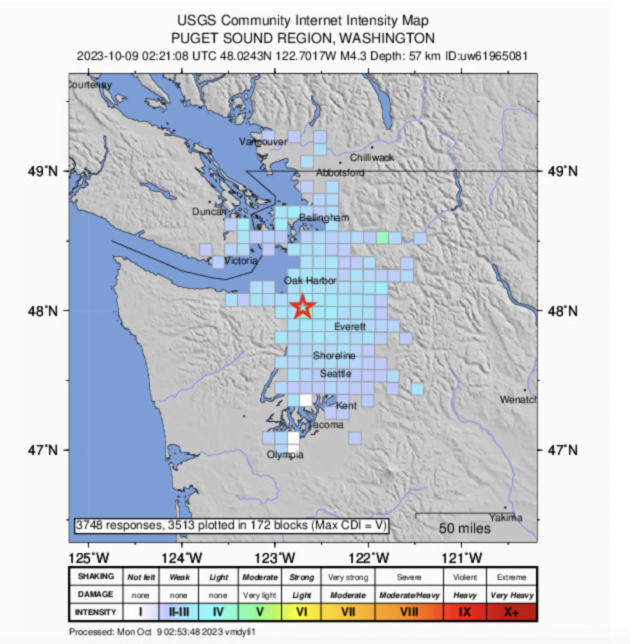Seattle experiences a 4.3 magnitude earthquake, raising concerns about seismic activity. Ongoing research into the Cascadia Subduction Zone aims to enhance earthquake preparedness in the region.
On Sunday evening at 7:21 p.m. PT, there was a preliminary report of a 4.3 magnitude earthquake occurring approximately 35 miles northwest of Seattle, south of Port Townsend. Numerous individuals, including some in Seattle, reported feeling the tremor. Thankfully, the U.S. National Tsunami Warning Center has assured that there is no tsunami threat associated with this event.

It’s worth noting that ShakeAlert, an automated earthquake warning system, was not triggered because the earthquake’s magnitude fell below the 4.5 threshold for activation. ShakeAlert has been operational in Washington state for the past two years and is available in other West Coast areas.
The Pacific Northwest has long been aware of the lurking threat of a major earthquake. Seattle is situated along two significant fault lines: the Seattle Fault, which runs from east to west through the city and is capable of producing earthquakes up to a magnitude of 7.4, and the Cascadia Subduction Zone along the coast, which has the potential for a massive magnitude 9 earthquake.
The Cascadia Subduction Zone extends for more than 620 miles, stretching from the northern tip of Vancouver Island, B.C., down to Cape Mendocino in Northern California. Along this fault, tectonic plates beneath the ocean are colliding and subducting beneath the North American continental plate. This interaction creates frictional stress that can lead to earthquakes.
In an effort to better understand and prepare for potential seismic events in the Cascadia Subduction Zone, the National Science Foundation recently announced $15 million in new funding over a five-year period for the establishment of the Cascadia Region Earthquake Science Center (CRESCENT). This center, based at the University of Oregon with the University of Washington as a key partner, will focus on researching the Cascadia Subduction Zone, identifying areas of increased strain, and forecasting the potential impacts of a major earthquake to enhance community preparedness.
Notably, the Nisqually earthquake with a magnitude of 6.8 struck the Seattle area on February 28, 2001, causing damage to buildings and roadways.